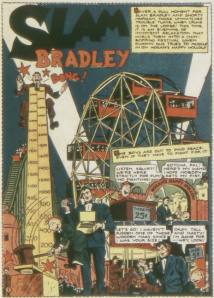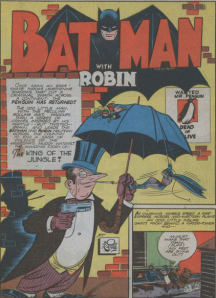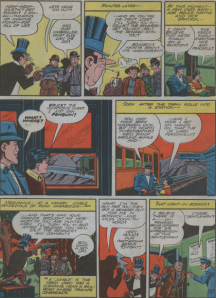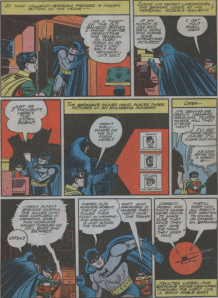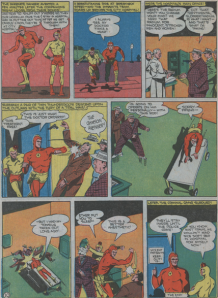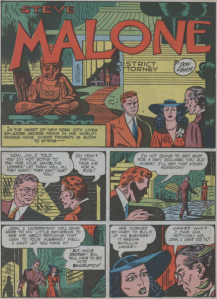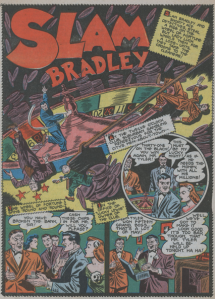Detective 152 – Batman vs the Goblin, Slam Bradley ends, and Pow-Wow Smith’s first case
It’s definitely Vicki Vale on the cover for Detective 152 (Oct. 49), and she is even in the Batman and Robin story inside! The scene pictured does not happen, but her photographs are central to the story.
The Bob Kane story introduces the villain, the Goblin, and then follows Vicki as she attempts to photograph Batman with three men whose lives he saved. When the photo gets sabotaged, Batman figures out that one of the three must be the Goblin.
From there it becomes a chase for the negative to the picture, and Vicki getting kidnapped. Batman gets a severe head injury, but saves her and reveals the Goblin. I love the last few panels, showing that Vicki has no problem throwing herself at both Batman and Bruce Wayne.
Slam Bradley’s long running series comes to an end in this issue, and Slam is barely even in the story. Instead, it’s all about Shorty, and his younger, but taller, brother Tiny. Howard Sherman provides the art.
Look, there’s Slam! Standing around while Shorty commands the story. This page has the most Slam Bradley on it of any page in his final story. Shorty’s comic hijinks were the meat of the series now.
I think Slam must have gone into retirement at this point, leaving the agency to Shorty. He’d been at it a full eleven years at this point. Slam Bradley would not return until Detective 500, in 1980.
Pow-Wow’s first case, with art by Infantino, clearly causes him some inner turmoil.
He is meant to compete in a sort of native version of the Olympics, but Jimmy summons him to go help round up some train robbers.
He winds up enlisting the braves of his tribe to help, and the take down of the train robbers is impressively done. Then, knowing he could win the honour of being the greatest brave, by moving a boulder he had already moved, he declines to do so, choosing to lose.
But why? The story is mute on this, but the only action he has taken during the course of the story that could account for this is abandoning the contest to go get the thieves. He must feel deeply torn about this.











































